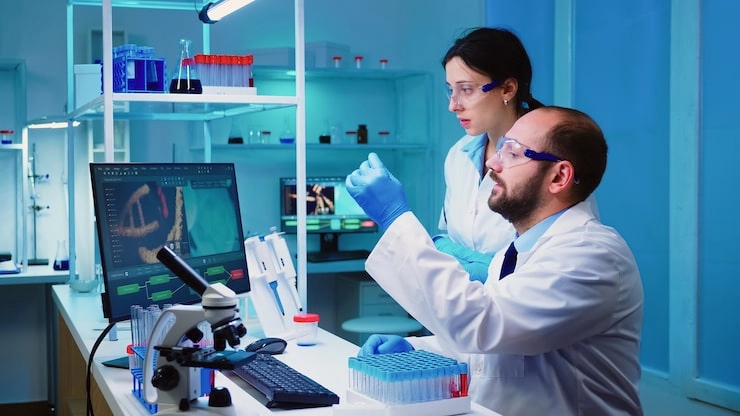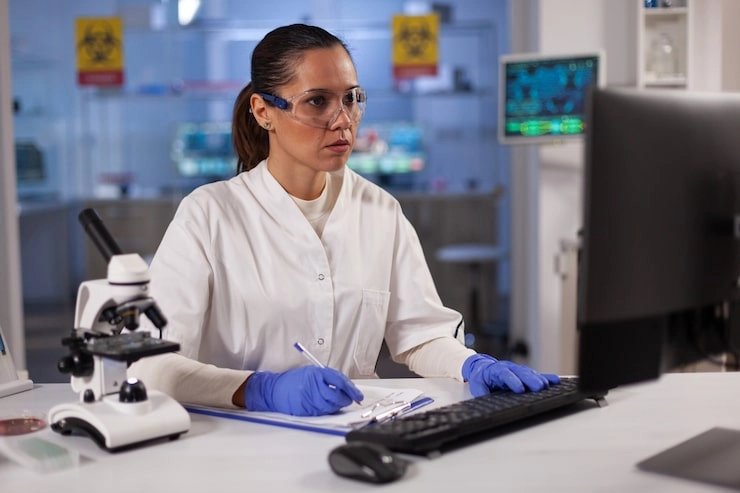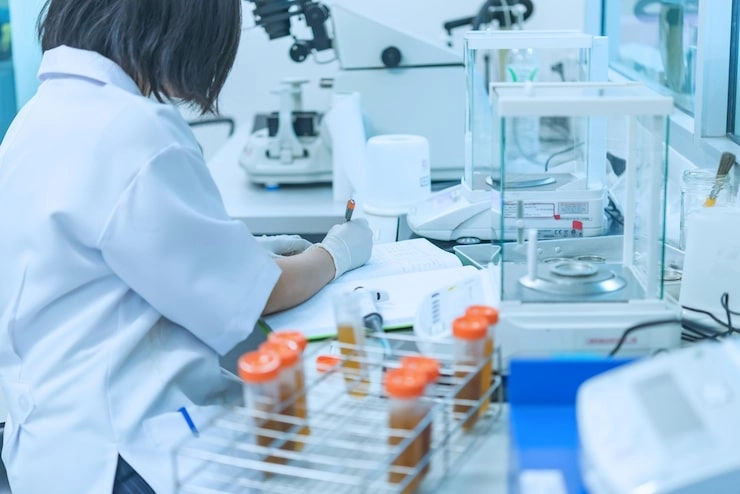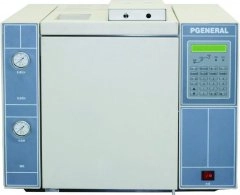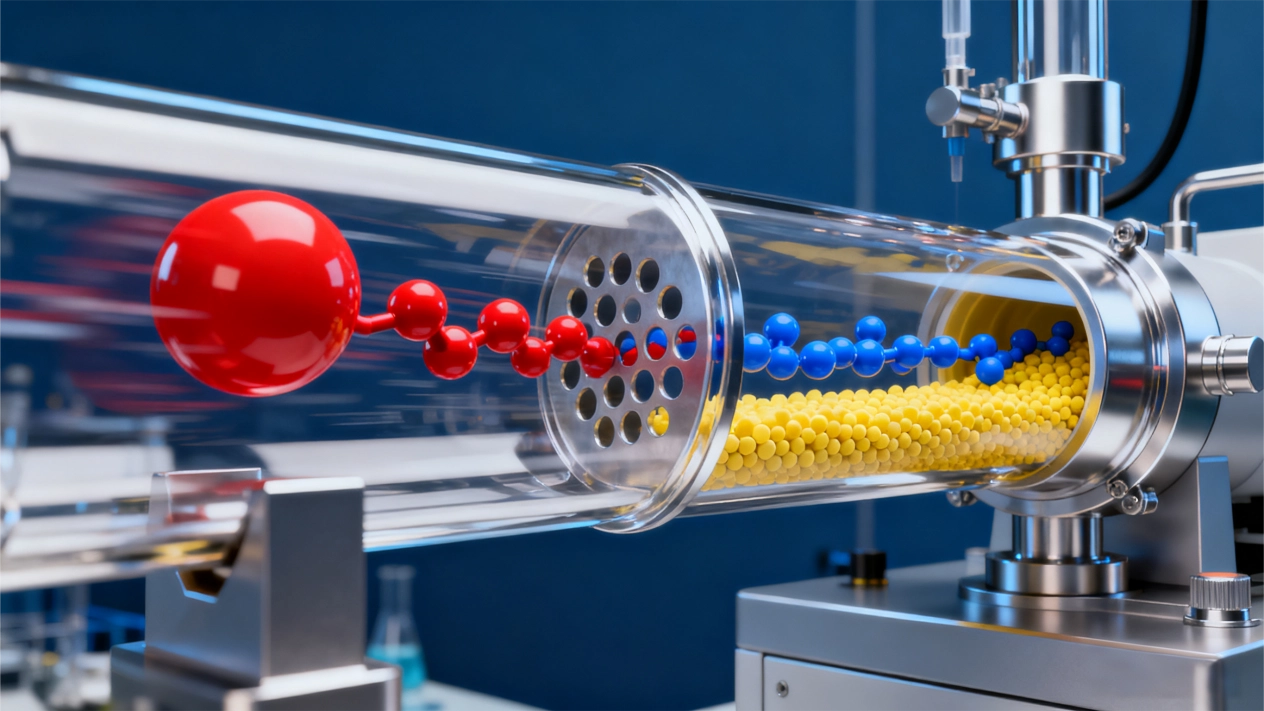
Size-exclusion chromatography (SEC) is a very useful method. It is also known as gel filtration chromatography. It is used to separate molecules based on their size in a solution. SEC is different. It works on a physical basis, not on chemical reactions like other methods. This makes it a special and safe tool for scientists. This article explains the basic ideas of size-exclusion chromatography. We will look at why some molecules come out first and see how it is used in science. Understanding how SEC works can really help your lab results, no matter if you are a student or a pro in biotech.
Principles of Size-Exclusion Chromatography
Size-exclusion chromatography is a technique that sorts molecules by their hydrodynamic volume as they go through a porous stationary phase. This method is very common for purifying proteins, studying polymers, and looking at biomolecules. Let’s explore the main ideas that explain how SEC separates things.
How Size-Exclusion Chromatography Separates Molecules
First of all, a sample is put into a column in SEC. This column is filled with a porous material. These are often tiny beads of agarose, dextran, or silica. The sample then moves through the column with a liquid called the mobile phase. Molecules get separated by whether they can fit into the pores of the beads. Big molecules cannot get into the small pores. So, they move faster between the beads. Smaller molecules, however, take a longer route because they go into the pores, so they come out later. To be more exact, SEC really separates molecules by their hydrodynamic volume. This is the amount of space a molecule takes up in a solution. Both mass and shape affect this volume. This basic idea explains why molecules come out in a specific order in size-exclusion chromatography.
The Role of Pore Size in the Stationary Phase
The pore size of the stationary phase is a very important part of SEC. You need to pick materials with the right pore sizes for the molecules in your sample. This is key. For example, a standard analytical SEC column can often separate molecules from 10 kDa to 600 kDa. This range is great for many globular proteins. Any molecules bigger than 600 kDa are totally left out and come out first in what is called the void volume (V₀). On the other hand, molecules smaller than 10 kDa go into all the pores and come out last, near the total permeation volume (Vₜ). Picking the correct pore size gives you the best separation. It allows for a clear difference between molecular sizes.
Differences Between Size-Exclusion and Other Chromatographic Techniques
SEC is quite different from other chromatography methods. Techniques like ion-exchange or affinity chromatography use chemical interactions, like charge or specific binding. But SEC separates molecules only by their hydrodynamic properties. There are no chemical reactions. As a result, SEC doesn’t harm or change delicate biomolecules like proteins. What’s more, other methods like reversed-phase chromatography often need organic solvents. SEC usually just uses water-based buffers. This makes it a much better fit for biological samples.
Factors Influencing Elution Order
A few things play a part in setting the elution order in size-exclusion chromatography. You must control these factors with care to get good, repeatable results.
Molecular Size and Shape and Their Impact on Elution Time
The main thing that decides elution time in SEC is the molecule’s hydrodynamic volume. It is a simple concept. Larger molecules can’t get into the pores of the stationary phase. Because of this, they take a shorter trip through the column and come out first. Smaller molecules can get into the pores. So, they take longer to get through and come out later. This opposite relationship between size and elution time is a key feature of SEC. Also, it is very important to know that molecular shape matters as much as mass. For instance, a long, skinny protein of 100 kDa will have a bigger hydrodynamic volume than a round protein with the same mass, so it will come out earlier.
Column Packing Material and Pore Structure
The type of material used to pack the column and its pore structure have a big impact on how well it separates things. You get better results with materials that have very consistent pore sizes. If the pore structure is not even, the elution profiles can spread out and overlap. That is bad. For example, stiff silica-based materials are often used for high-performance jobs with smaller molecules. In contrast, cross-linked agarose-based gels are usually the better choice for bigger biomolecules like proteins and antibodies.
Flow Rate and Mobile Phase Composition
The flow rate of the mobile phase also affects how molecules elute. A slower flow rate gives smaller molecules more time to go into the pores. This improves the separation. But it makes the whole process take longer. The mobile phase, usually a buffer, must be picked carefully to stop any unwanted reactions between the sample and the stationary phase. This ensures that separation is based only on size. Also, the right amount of salt (e.g., 150 mM NaCl) is often added to stop any random electrostatic interactions.
Elution Behavior of Molecules
Why Larger Molecules Emerge Before Smaller Ones
In size-exclusion chromatography, big molecules come out first. This happens because they are kept out of the pores in the stationary phase. They cannot get inside the beads. Thus, they only move through the void volume, which is the space between the beads. This is the fastest way to the end of the column. Smaller molecules, however, are different. They can get into the pores. This makes their path longer and increases the time they stay in the column.
Pathways Through the Column Matrix for Different Molecule Sizes
The path a molecule follows through the column depends on its size compared to the pore size.
- Large molecules (total exclusion): These completely avoid the pores. They move only through the spaces in between the beads.
- Medium-sized molecules (partial inclusion): These can go into some of the pores. This leads to medium elution times.
- Small molecules (total inclusion): These can get into all the pore space. This results in the longest path and the latest elution.
Limitations in Separation Based on Molecular Similarity
SEC is a very good method. But it has trouble separating molecules that are about the same size and shape. When this happens, their elution times can overlap. The result is poor separation. Scientists need to remember these limits when they plan their experiments and analyze their data.
Applications of Size-Exclusion Chromatography
Protein Purification and Analysis
One of the most frequent uses of SEC is for protein purification. It works very well for separating single proteins from clumps or smaller impurities. It is also used to study protein groups and find out their oligomeric states. This gives important information about how they work in the body.
Caratterizzazione polimerica
In the world of materials science, SEC is used to find the molecular weight distribution of polymers. Here, it is often called Gel Permeation Chromatography (GPC). This information is very important for knowing a polymer’s physical properties.
Separation of Biomolecules in Pharmaceutical Research
In drug research, SEC is a key tool for the quality control of biologic drugs, like monoclonal antibodies (mAbs), enzymes, and nucleic acids. It has a big role in creating new drugs by measuring large clumps and small pieces. This makes sure the final medicine is pure and stable.
Key Considerations for Accurate Results
Calibration with Molecular Weight Standards
For good size measurement, you must first calibrate the system. This is done with molecular weight standards. By running known standards, scientists can make a calibration curve. This curve plots elution volume against the log of the molecular weight. For proteins, a common set of standards includes Thyroglobulin (~670 kDa), γ-globulin (~158 kDa), Bovine Serum Albumin (BSA, ~66 kDa), Ovalbumin (~44 kDa), and Myoglobin (~17 kDa). This step is vital for guessing the molecular weight of unknown samples.
Importance of Column Selection and Maintenance
Choosing the right column with the right pore size range is critical. Also, you need to take care of it. Regular upkeep, like cleaning and storing it correctly, helps the column last longer and work well every time.
Tecniche di preparazione del campione
Preparing the sample is also very important. Clumps or broken-down samples can mess up the results. Things like filtering or spinning the sample to get rid of particles can help. Using buffers that keep the sample stable can also stop clumping. These steps make sure that you get good data from SEC.
PERSEE: Trusted Manufacturer of Analytical Instruments
When you need good analytical tools for chromatography, Persee is a name you can trust. Their knowledge and new products help scientists get exact and repeatable results.
Overview of PERSEE’s Expertise in Chromatography Solutions
PERSEE is a well-known name for analytical tools. They have built a reputation as a leader in this area. They offer many different solutions just for chromatography uses. Labs that do size-exclusion chromatography often choose them because of their focus on quality and new ideas. PERSEE provides scientists with the tools they need for advanced research. Their products are easy to use and built to last.
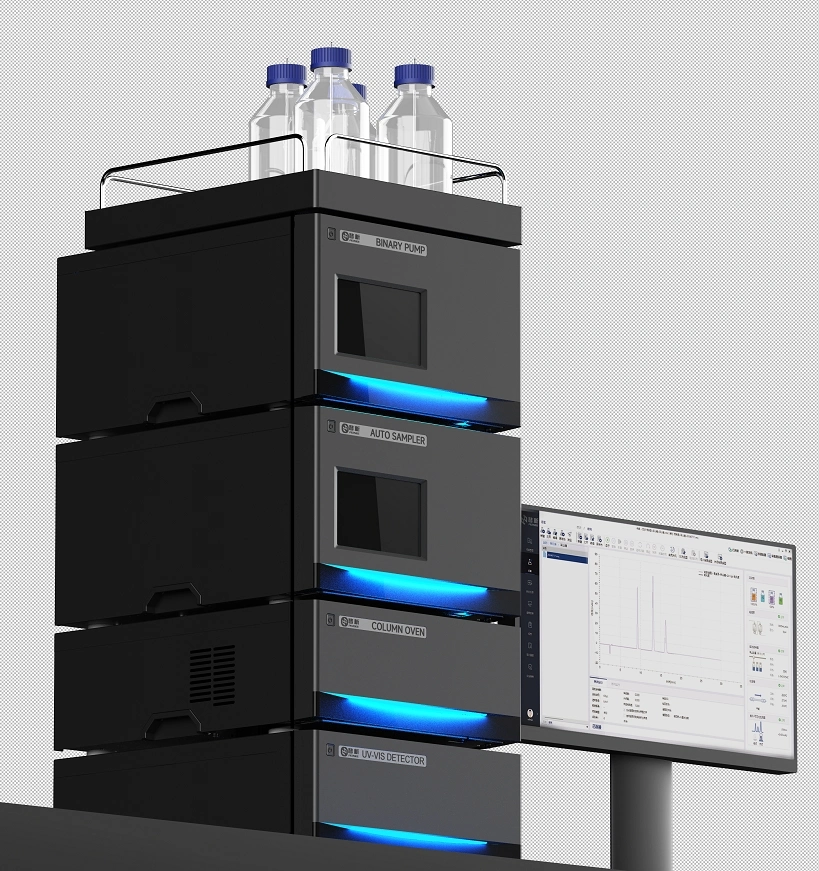
Highlighting the L600 High Performance Liquid Chromatograph System
The L600 High Performance Liquid Chromatograph System is a top product from PERSEE. It is made to handle the needs of today’s busy labs.
- Features Supporting High Precision and Reproducibility: The L600 system has great features. These include exact flow control, very sensitive detectors, and setups you can change. This ensures amazing accuracy in size-exclusion chromatography work. Its strong build also means less variation, giving you results you can count on.
- Applications Across Biotech, Pharmaceutical, and Academic Research Fields: The L600 system can do many jobs. It helps with a lot of different tasks in biotech, pharma, and university research. It delivers solid results whether you are purifying proteins, studying polymers, or analyzing biomolecules. Its flexibility shows how much PERSEE cares about improving size-exclusion chromatography.
Summary of Key Insights
The order of elution of the molecules is the main feature of size-exclusion chromatography. Larger molecules elute first. This is due to the reason that they are excluded from passing inside the pores of the stationary phase and have a shorter distance. Smaller molecules can penetrate the pores. This gives them a longer path, thus they elute later. Keeping this easy rule in your mind is the key to making good experiments and making sense of your lab data.
FAQ
Q1: What makes SEC a preferred method for protein purification?
A: SEC is preferred for protein purification because it separates proteins according to size in their native state without using extreme chemicals. It is a gentle process. This means proteins are active and functional. In addition, SEC performs exceptionally well in removing protein agglomerates, which is of highly significant importance to the quality of protein drugs.
Q2: How can I improve resolution in SEC experiments?
A: To get better separation, you can do a number of things:
- Use a column with smaller beads and a good pore size for your sample.
- Use a longer column, which gives molecules more space to move.
- Lower the flow rate. This gives molecules more time to spend with the stationary phase.
Q3: Is size-exclusion chromatography suitable for all types of molecules?
A: SEC is very valuable, but it’s best when molecules are different sizes. It can find it difficult to separate molecules with highly similar hydrodynamic volumes. If you’re having this problem, you can try using SEC in conjunction with other methods (like ion-exchange chromatography) to get the separation you need.



